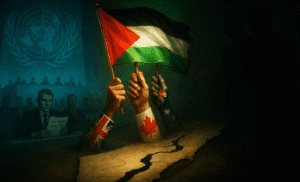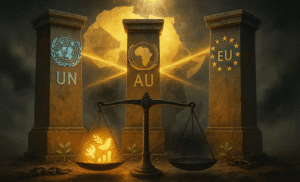Israel and Hamas have reached an agreement on the first phase of a peace deal, raising cautious hopes of ending one of the deadliest chapters in the Israeli-Palestinian conflict. But beyond headlines about hostages and withdrawals, the true weight of this deal lies in whether it can lay the foundation for lasting change, or simply delay the next eruption of violence.
Why Now? The War That Forced a Reckoning
After nearly two years of unrelenting war, the Gaza Strip lies in ruins. Civilian death tolls have surpassed 67,000 according to various estimates, infrastructure has collapsed, and both sides face growing domestic and international pressure to step back from the brink. Israel, facing increasing isolation and internal political tension, may see this agreement as a strategic necessity. Hamas, severely weakened but not eliminated, is seeking to preserve its relevance while alleviating pressure on the population it governs.
Unlikely Negotiators: The Players Behind the Curtain
Despite the enduring hostility between Israel and Hamas, indirect negotiations were made possible by the intervention of regional powers. Egypt, Qatar, and Turkey played key mediating roles, facilitating communication and proposing compromise language that both sides could accept during a series of closed-door negotiations held in Cairo over several weeks. The United States expressed support but refrained from leading the process. This reflects a growing shift toward regional diplomacy, as global powers step back and local actors assert more influence in resolving Middle East conflicts.
Inside the Deal: What Phase One Really Promises
The first phase of the agreement is a carefully calibrated arrangement designed to reduce hostilities while building the minimal trust required for deeper negotiations. At its core, the deal hinges on reciprocal gestures: Hamas is to release all Israeli hostages currently held in Gaza, many of whom have been in captivity since the October 2023 attacks. In return, Israel has committed to releasing approximately 1,200 Palestinian detainees, including a mix of political prisoners, individuals held under administrative detention, and those convicted of violent offenses.
On the military front, Israel will begin a phased withdrawal from densely populated areas of Gaza, notably portions of Gaza City and northern sectors that have seen some of the heaviest fighting. However, the Israel Defense Forces (IDF) will maintain a military presence along key strategic corridors, including the southern perimeter near the Rafah border and the Netzarim corridor that effectively bisects the enclave. This partial withdrawal stops short of full disengagement, preserving Israel’s operational flexibility and leverage in future phases.
Crucially, the deal includes a major expansion of humanitarian access. Daily aid convoys coordinated by the United Nations and the Red Crescent are expected to deliver food, fuel, medical supplies, and construction materials into Gaza through the Kerem Shalom and Rafah crossings. This increase is aimed at alleviating the acute humanitarian crisis, with more than 80 percent of Gaza’s population now internally displaced and over half living without access to clean water or electricity.
The agreement also outlines the establishment of an international monitoring mechanism to oversee the release process and aid distribution. Qatar and Egypt are expected to lead this oversight, with support from neutral observers. However, the mechanism’s legal authority remains limited, and enforcement will depend heavily on voluntary compliance by both parties.
Despite these steps, the agreement leaves fundamental issues unresolved. Hamas remains armed and in control of significant territory, while Israel retains the right to re-engage militarily should it perceive violations of the deal. Questions of political sovereignty, border governance, and disarmament have been deferred, leaving the structural roots of the conflict untouched for now.
What Comes Next? Promise or Peril in the Next Stages
While this initial step has brought a temporary halt to active fighting, the road ahead is far from settled. Key decisions about Gaza’s governance, the disarmament of militant groups, and the long-term presence of Israeli forces remain unresolved. There is talk of international peacekeeping forces and a joint reconstruction plan, but no formal commitments have been made. If the next phases stall or if either side breaches the terms, the conflict could reignite, possibly more intensely than before.
A Temporary Pause or a Turning Point?
This agreement marks the most meaningful step toward de-escalation since the war began, but its success depends on execution and trust, both in short supply. Phase One is not peace; it is an opening. The coming weeks will test whether this deal is a prelude to stability or simply an intermission in a longer tragedy.













